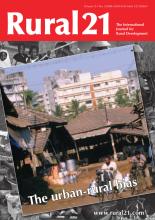Land Library Search
Through our robust search engine, you can search for any item of the over 73,000 highly curated resources in the Land Library.
If you would like to find an overview of what is possible, feel free to peruse the Search Guide.
/ library resources
Showing items 1 through 9 of 61.This paper examines the impact of land reform on agricultural productivity in Tajikistan. Recent legislation allows farmers to obtain access to heritable land shares for private use, but reform has been geographically uneven.
"Malawi has experienced modest economic growth over the last decade and a half. However, agricultural growth has been particularly erratic, and while the incidence of poverty has declined, it still remains high.
"Over the past two decades, Uganda has experienced strong economic growth. However, agriculture has not performed as well as the rest of the economy in recent years, and while the incidence of poverty has declined, it is still substantially higher in rural rather than urban areas.
"Large private investments in biofuels are presently underway in Mozambique. This paper uses an economywide model to assess the implications of these investments for growth and income distribution. Our results indicate that biofuels provide an opportunity to enhance growth and poverty reduction.
In a world of food abundance, millions of people suffer from poor nutrition. In some parts of the world, the poor have inadequate access to energy from food to meet their energy requirements.
The early development strategies of both China and India were urban- and industry-focused, discounting the importance of rural development. Despite sweeping reforms in both countries, the urban bias and subsequent spatial disparities still exist today.
Four billion people who live on less than two US dollars per day represent in total an enormous purchasing power. Multinational corporations such as Nestlé, Unilever, Danone and Dr.
Approximately 85% of Malawi’s population live in rural areas and depend in some way on forests for their livelihoods. Recent government policies have highlighted how forest resources could do more to help reduce poverty through the development of small and medium forest enterprises (SMFEs).
Secure land rights are important for development and poverty reduction and the greatest challenges for providing such rights are in urban, peri-urban areas, and the most productive rural areas.





